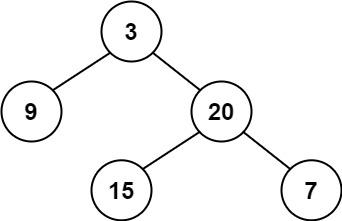110. Balanced Binary Tree


Description
Given a binary tree, determine if it is height-balanced.
For this problem, a height-balanced binary tree is defined as:
a binary tree in which the left and right subtrees of every node differ in height by no more than 1.
Example 1:

Input: root = [3,9,20,null,null,15,7] Output: true
Example 2:

Input: root = [1,2,2,3,3,null,null,4,4] Output: false
Example 3:
Input: root = [] Output: true
Constraints:
- The number of nodes in the tree is in the range
[0, 5000]. -104 <= Node.val <= 104
Solution
balanced-binary-tree.py
# Definition for a binary tree node.
# class TreeNode:
# def __init__(self, val=0, left=None, right=None):
# self.val = val
# self.left = left
# self.right = right
class Solution:
def isBalanced(self, root: Optional[TreeNode]) -> bool:
res = True
def go(node):
nonlocal res
if not node: return 0
l, r = go(node.left), go(node.right)
if abs(l - r) > 1:
res = False
return 1 + max(l, r)
go(root)
return res
balanced-binary-tree.cpp
/**
* Definition for a binary tree node.
* struct TreeNode {
* int val;
* TreeNode *left;
* TreeNode *right;
* TreeNode() : val(0), left(nullptr), right(nullptr) {}
* TreeNode(int x) : val(x), left(nullptr), right(nullptr) {}
* TreeNode(int x, TreeNode *left, TreeNode *right) : val(x), left(left), right(right) {}
* };
*/
class Solution {
public:
int dfs(TreeNode* root){
if (root == nullptr) return 0;
int left = dfs(root->left);
int right = dfs(root->right);
if (left == -1 || right == -1 || abs(left-right) > 1) return -1;
return 1 + max(left, right);
}
bool isBalanced(TreeNode* root) {
return dfs(root) != -1;
}
};